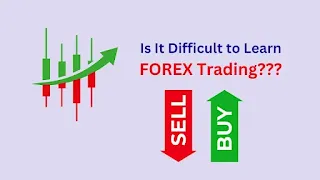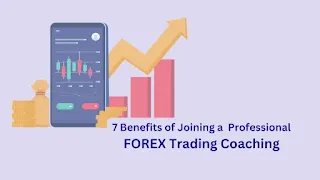A Detailed Exploration of Leverage and How It Impacts Both Risk and Reward in Forex
Imagine you’re in a car. You are speeding the car down a highway. You press the accelerator, and suddenly, you’re moving faster than you ever thought possible. Now, picture that this car can keep accelerating, but only if you press the pedal harder. That’s what leverage in forex trading is like. It gives you the ability to make a small amount of money go a long way. But like speeding down a highway, if you’re not careful, things can go wrong very quickly.
Let me take you on a journey where we explore what leverage is, how it works in the world of forex (foreign exchange) trading, and the risks and rewards that come with using it. By the end of this, you’ll have a better understanding of whether leverage is a good tool for you or something you should use carefully.
Suggested articles for you:
What is Leverage?
In simple terms, leverage means using borrowed money to increase the potential return of an investment. It’s like if you want to buy a big TV, but you don’t have enough money. You ask your friend for help, and in return, you agree to pay them back later. Leverage is similar. In forex trading, brokers lend you money so you can control a larger amount of currency with a small deposit, known as the margin.
Imagine you have $100 in your trading account. Your broker might offer you leverage of 100:1, which means you can control $10,000 worth of currency with just that $100. You don’t need to have the full amount to make big trades. This is both exciting and risky. If you get it right, you can earn a lot more than you invested. But who knows, if you do something wrong, you may face a great loss. You may even lose more money than you initially put in.
How Does Leverage Work in Forex Trading?
Let’s break it down with an example.
Say you’re a trader, and you want to trade the EUR/USD currency pair, which shows how much one Euro is worth in U.S. dollars. If the exchange rate is 1.20, then you get 1.20 U.S. dollars for 1 Euro. With leverage of 100:1, you can trade $10,000 worth of Euros with only $100.
So, if the price of the Euro goes up to 1.21, you’ve made a profit of $100 (1,000 units x 0.01). Without leverage, you’d need $1,000 to make the same profit. But with leverage, you can make the same amount with just $100.
However, the story doesn’t end there. If the market moves against you, and the exchange rate drops to 1.19, you would lose $100, wiping out your entire margin. In the world of leverage, small price changes can have big effects. This is why leverage is both a powerful tool and a dangerous one.
Suggested for You
The Benefits of Leverage
Greater Profits with Smaller Investments
The biggest advantage of leverage is that it allows you to make large profits with relatively small amounts of money. Let’s say you’ve invested just $100 in a currency pair, but with leverage, you can control $10,000 worth of currency. If the market moves in your favour by just a small amount, your profit will be much bigger than if you were trading without leverage.
For example, a 1% movement in the market with a $100 investment could yield a $100 profit. Without leverage, you’d need to invest $10,000 to see the same return. This makes leverage attractive for many traders because it gives them the chance to earn more money without needing a large starting amount.
Increased Flexibility
Leverage also provides more flexibility when it comes to managing risk. With leverage, traders can take larger positions without putting all their money at risk. Instead of committing all their funds to a single trade, they can diversify their investments. This allows them to experiment with different currency pairs and trading strategies without risking their entire portfolio.
The Risks of Leverage
While leverage can lead to greater profits, it also comes with significant risks. The problem is that while your profits can be multiplied, so can your losses.
Risk of Losing More Than You Invested
This is perhaps the biggest risk of leverage. Because leverage magnifies both profits and losses, it’s possible to lose more money than you initially invested. Let’s revisit our $100 example. If the market moves against you by 1%, you could lose your entire $100. But if the market moves 2%, you could lose $200. And if the market moves 5% against you, you could lose $500, which is five times more than your initial deposit.
Brokers may offer "stop-loss" orders to prevent you from losing too much, but even these can fail during times of extreme market volatility. If the market moves too fast, you might still end up losing more than you’ve invested.
High Pressure to Make Quick Decisions
When using leverage, you’re dealing with large sums of money, even if your actual investment is small. This can create a lot of pressure to make quick decisions. One bad decision can wipe out your entire margin, and sometimes, you may not even have time to react. This is why many experienced traders use leverage carefully, or even avoid it altogether. They know that the pressure of making quick, high-stakes decisions can be overwhelming.
Potential for Overtrading
With leverage, it’s easy to get carried away. You might be tempted to take larger positions or make more trades than you can afford. This is known as overtrading, and it’s one of the quickest ways to lose money in the forex market. Just because you can control a large amount of currency doesn’t mean you should. Overtrading can lead to bigger losses faster.
Real-World Example: Leverage in Action
To help you understand the impact of leverage, let’s look at a real-world example. In 2015, a Swiss currency shock shook the forex market. The Swiss National Bank decided to remove the cap it had placed on the Swiss Franc’s value. The result was a dramatic surge in the Franc’s value, causing massive losses for traders who had used leverage.
One trader, who had used 100:1 leverage, saw their account go from a positive balance to a negative one in a matter of seconds. Many brokers had to close positions automatically to prevent traders from going deeper into debt. The Swiss Franc shock serves as a reminder of just how quickly things can go wrong when leverage is involved.
How to Use Leverage Wisely
Start Small
When using leverage, it’s important to start small. Many brokers allow traders to adjust their leverage ratio. Instead of using the maximum leverage available, consider using a lower ratio until you understand how it works and how to manage risk.
Use Stop-Loss Orders
Stop-loss orders are essential when trading with leverage. These orders automatically close a trade if the market moves against you by a certain amount. While stop-losses don’t guarantee you won’t lose money, they can help limit losses and protect your margin.
Understand the Market
Before using leverage, make sure you have a good understanding of the forex market. Learn how currency pairs move, study market trends, and develop a strategy. Understanding the market can help you make smarter decisions and reduce the risk of losing money.
Conclusion
Leverage in forex trading can be both a blessing and a curse. On one hand, it offers the potential for big profits with a small initial investment. On the other hand, it also risks losing more money than you invested. The key to using leverage effectively is understanding how it works, knowing when to use it, and being aware of the risks involved.
For some traders, leverage can be an invaluable tool that helps them grow their accounts. But for others, it can lead to rapid losses and stress. If you choose to use leverage, remember to start small, manage your risks, and always be prepared for the unexpected. After all, in the world of forex trading, just like driving a car, speed can be exciting—but only if you know how to handle the ride safely.














